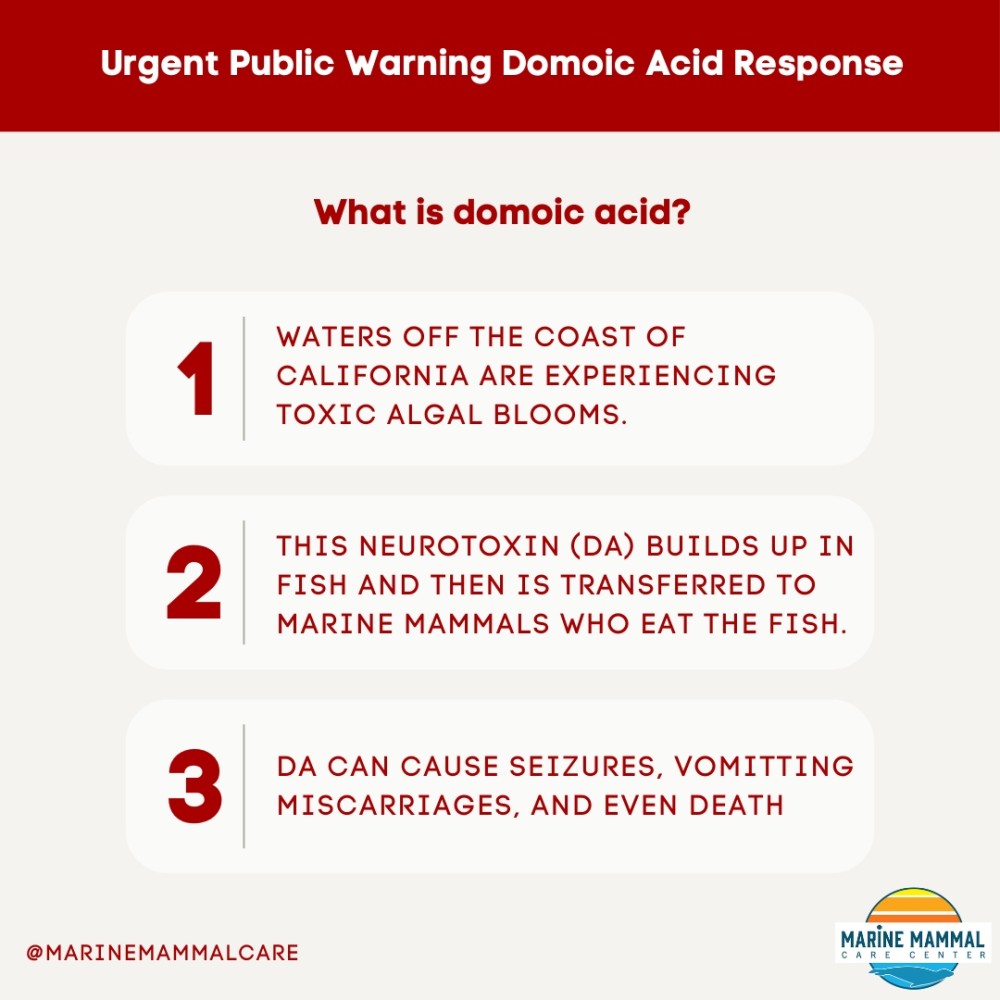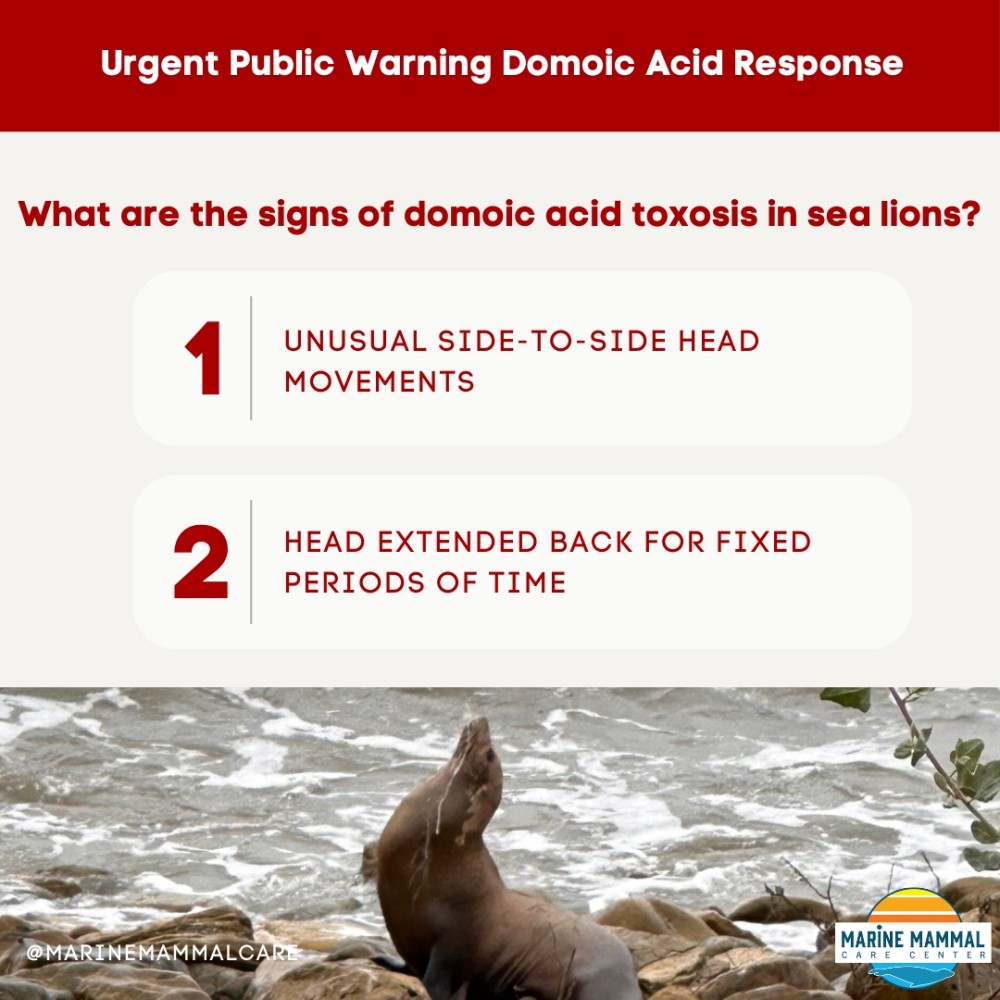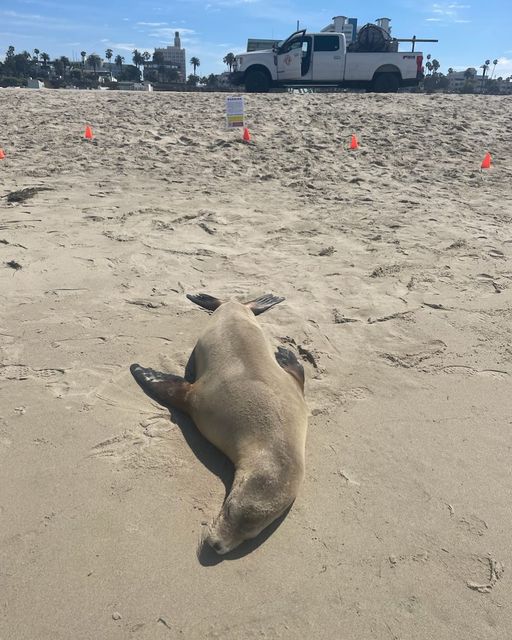Neurotoxin Could Sicken Humans That Eat Seafood, Animals Could Be Dangerous
By Dolores Quintana
Los Angeles County Departments of Beaches and Harbors, Public Health, and Animal Care and Control have issued two warnings to the public about the dangers posed by large algae blooms along the California coast, endangering marine mammals and rendering some seafood unsafe for consumption. These blooms produce a neurotoxin called domoic acid, which enters the food chain when plankton consume the toxic algae. As it moves up the food chain, the toxin becomes more concentrated, potentially causing seizures and heart failure in large quantities. While sea lions and dolphins can exhibit symptoms after consuming contaminated fish, contaminated shellfish pose the most significant risk to humans.

It’s important to note that consuming high doses of domoic acid can be fatal for humans. The Los Angeles County Department of Public Health advises residents to exercise caution and stay informed about the ongoing toxic algae bloom, checking for state-issued shellfish advisories before consuming seafood such as crabs, clams, mussels, and oysters.
Currently, the California Department of Public Health (CDPH) has issued an advisory to caution against the consumption of sport-harvested mussels, clams, or scallops from Santa Barbara County.
Symptoms of domoic acid poisoning, known as amnesic shellfish poisoning, can manifest within 30 minutes to 24 hours after consuming toxic seafood. Mild cases may include vomiting, diarrhea, abdominal cramps, headache, and dizziness, which subside within several days. Severe cases can involve trouble breathing, confusion, seizures, cardiovascular instability, and even permanent short-term memory loss. Individuals experiencing symptoms should seek medical attention, while those with severe symptoms should call 9-1-1 or seek immediate emergency care.

Over 100 sea lions, likely affected by domoic acid toxicity, have already stranded themselves on Los Angeles County beaches. Authorities expect more cases to occur during the upcoming holiday weekend and Fourth of July celebrations.
Beachgoers are advised to maintain a minimum distance of 50 feet from sick animals to ensure their safety and the well-being of the sea lions. Furthermore, beachgoers should promptly report sightings of distressed marine life to the Marine Mammal Care Center (MMCC) at 800-39-WHALE (800-399-4253). In Malibu, the California Wildlife Center should be contacted at 310-458-WILD (9453) and then select option 1.
The Marine Mammal Care Center has stated that they have 100 marine mammals they are treating for domoic acid poisoning via their social media page. California Wildlife Center said, via their social media page, that they are receiving 150 calls a day about marine mammals in distress.
Sick sea lions may exhibit agitation and aggression, making contact with humans potentially dangerous and stressful for the animals. Marcia Mayeda, Director of the Los Angeles County Department of Animal Care and Control (DACC), emphasizes that the best way to assist is to stay away and report sick animals immediately. Additionally, individuals can contribute by donating their time or funds to the MMCC and the California Wildlife Center.

This year, the number of sick sea lions has far exceeded previous years, overwhelming local marine rescue facilities like the MMCC in San Pedro. To address this, the Los Angeles County Department of Beaches and Harbors (DBH) has collaborated with the MMCC to establish a temporary care facility on the Marina Peninsula, providing additional treatment areas for sea lions during their recovery.
The Los Angeles County Department of Animal Care and Control (DACC), the Department of Beaches and Harbors (DBH), and the Department of Public Health will continue closely monitoring the situation.


























